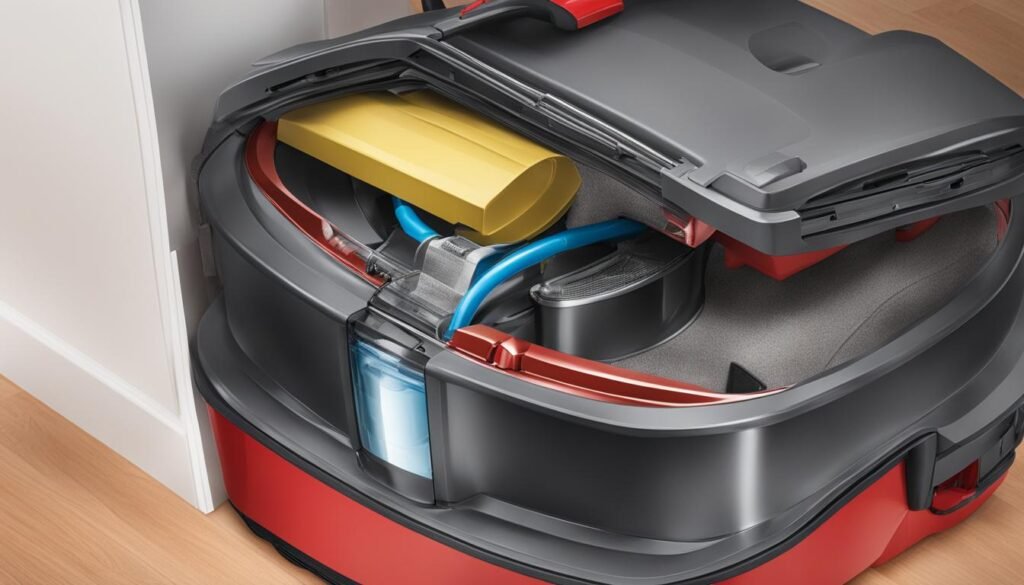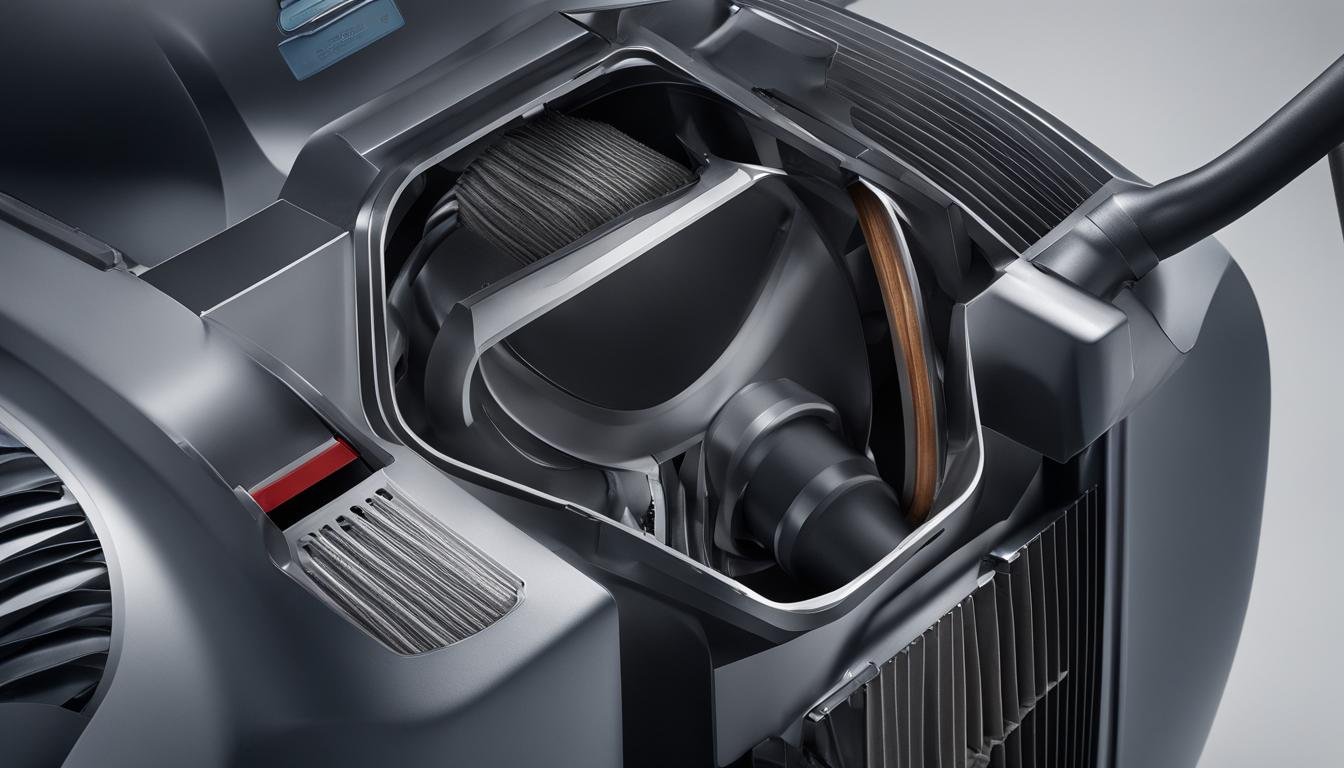Have you ever wondered how vacuum cleaners work their magic, efficiently cleaning your home? It’s fascinating to understand the mechanism behind these devices that have become an indispensable part of our cleaning routine. Vacuum cleaners make use of clever technology and a simple principle to suck up dirt and debris, leaving your floors spotless.
The mechanism that powers a vacuum cleaner is based on the concept of suction. When you turn on the vacuum cleaner, a fan inside it starts rotating rapidly, creating a powerful suction force. This suction force pulls in surrounding air, causing it to flow through the vacuum cleaner like a stream of water. As the air moves, it comes into contact with loose dust and debris, effectively picking them up along the way.
In some vacuum cleaner designs, there are rotating brushes at the intake port. These brushes agitate the carpet, dislodging any dirt or dust particles that may be embedded in the fibers, making it easier for the suction to remove them. This combination of suction and brushing ensures a thorough cleaning process.
Key Takeaways:
- Vacuum cleaners work by creating suction, which moves air and picks up dirt and debris.
- Some vacuum cleaners have rotating brushes to agitate carpets and enhance the cleaning process.
- The rotating fan inside the vacuum cleaner is powered by an electric motor, creating the suction force.
- Vacuum cleaners often use filtration systems to trap dirt and prevent it from being released back into the air.
- Understanding the mechanism behind vacuum cleaners can help you choose the right one for your cleaning needs.
The Components of a Vacuum Cleaner and How They Work Together
A vacuum cleaner consists of several essential components that work together to ensure effective cleaning. These components include an intake port, an exhaust port, an electric motor, a fan, a porous bag, and a housing.
When you turn on the vacuum cleaner, the electric motor rotates the fan, which pulls air through the intake port. The air is then pushed past an impeller blade, creating a cyclonic action that separates larger debris from smaller particles.
The air travels through the porous bag, which traps the separated debris, while the airflow continues to be drawn into itself. The vacuum cleaner’s suction power depends on factors like the strength of the fan, the size of the particles being sucked up, and the design of the machine.
The filtration system in the vacuum cleaner helps trap microscopic particles that can cause allergies and respiratory problems.
Efficient Cleaning Process
Let’s break down the cleaning process of a vacuum cleaner:
- Suction: The fan creates suction, pulling in air and particles from the intake port.
- Filtration: The air passes through the porous bag, where the debris is trapped, while clean air continues through the system.
- Separation: The cyclonic action separates larger debris from smaller particles, ensuring efficient cleaning.
- Collection: The trapped debris is collected in the bag or a separate container, ready for disposal.
By understanding the workings of these components, you can appreciate the thorough and efficient cleaning provided by a vacuum cleaner.
Various Types of Vacuum Cleaners and Their Functionality
When it comes to keeping our homes clean and dust-free, vacuum cleaners are a blessing. But did you know that vacuum cleaners come in various types, each designed for specific purposes? Let’s explore the different types of vacuum cleaners and understand how they function.
1. Upright and Canister Vacuum Cleaners: These are the most common types of vacuum cleaners used for general household cleaning. Upright vacuum cleaners are known for their maneuverability and ease of use. They stand upright and feature a rotating brush head that agitates the carpet fibers, allowing efficient dirt and debris pickup. On the other hand, canister vacuum cleaners consist of a separate motor and dust collection unit that is connected to a hose and a wand. They offer versatility and are ideal for cleaning stairs, upholstery, and hard-to-reach areas.
2. Handheld Vacuum Cleaners: If you need a portable cleaning solution for small areas, handheld vacuum cleaners are perfect. They are lightweight, compact, and easy to carry around. These versatile devices are great for quick clean-ups, car interiors, and upholstery.
3. Shop Vacuum Cleaners: Designed for heavy-duty cleaning, shop vacuum cleaners are ideal for industrial or commercial use. They offer powerful suction and can handle larger debris like wood chips, metal shavings, and liquids. These robust and durable vacuums are commonly used in workshops, construction sites, and garages.
4. Robot Vacuum Cleaners: With advancements in technology, robot vacuum cleaners have become increasingly popular. These programmable devices can navigate around furniture and obstacles in your home to clean floors automatically. They are equipped with sensors and intelligent mapping systems, allowing them to cover every nook and cranny without human intervention. Robot vacuum cleaners are a convenient option for busy individuals who want to maintain a clean home effortlessly.
5. Central Vacuum Systems: Built-in vacuum cleaners, known as central vacuum systems, are commonly installed in homes or commercial settings. These systems consist of a power unit installed in a central location, with tubing running through the walls, allowing multiple outlets for vacuuming throughout the space. Central vacuum systems offer powerful suction and are known for their quiet operation.
Despite their differences, all types of vacuum cleaners operate based on the same principles. A fan creates suction, drawing in air along with dirt and debris. The use of brushes or attachments aids in effective cleaning, ensuring that your floors and surfaces are left spotless.

Having a vacuum cleaner that suits your needs and preferences can make a significant difference in the cleanliness of your home. Whether you opt for an upright vacuum, a robot vacuum, or a central vacuum system, understanding how these devices work can help you make an informed decision. So next time you’re in the market for a new vacuum cleaner, consider the various types and their functionalities to ensure efficient and hassle-free cleaning.
Conclusion
Understanding the inner workings of vacuum cleaners is crucial when selecting the right model for your cleaning needs. The combination of vacuum cleaner technology, mechanism, and filtration system determines its cleaning power. By comprehending the functioning of a vacuum cleaner, you can make an informed decision for effective home cleaning.
The key components of a vacuum cleaner, such as the rotating fan, roller brush, and filtration system, work synergistically to create powerful suction, agitate dirt and debris, and trap them in a bag or container. By considering factors like suction power, filtration efficiency, and the specific features of different vacuum cleaner types, you can ensure efficient and thorough cleaning throughout your home.
Whether you opt for an upright, canister, handheld, robot, or central vacuum cleaner, the fundamental principle behind their operation remains the same. Vacuum cleaners harness the power of air flow and maintain a balance between suction and filtration to deliver excellent cleaning results. With this understanding, you can confidently choose the perfect vacuum cleaner to keep your home spotless and fresh.
FAQ
How does a vacuum cleaner work?
A vacuum cleaner works by creating suction through a rotating fan, which creates a stream of air that acts like water. This airflow then carries loose dust and debris into the vacuum cleaner. Some vacuum designs also have rotating brushes to loosen dirt from carpets. The dirt-filled air passes through a porous bag that collects the debris while allowing clean air to pass through.
What are the essential components of a vacuum cleaner?
The essential components of a vacuum cleaner include an intake port, an exhaust port, an electric motor, a fan, a porous bag, and a housing. The electric motor powers the fan, which pulls air through the intake port. The air then passes through the porous bag, which traps debris, while the fan continues to draw in more air.
How does the suction power of a vacuum cleaner work?
The suction power of a vacuum cleaner depends on factors such as the strength of the fan, the size of the particles being sucked up, and the design of the machine. A strong fan creates higher suction power, while the size of the particles affects how easily they can be picked up. The design of the machine, including the shape and size of the intake port, also influences suction power.
How does the filtration system in a vacuum cleaner work?
The filtration system in a vacuum cleaner helps trap microscopic particles that can cause allergies and respiratory problems. The system typically consists of a porous bag that acts as an air filter. As the air passes through the bag, it collects dirt and debris while allowing clean air to pass through. Some vacuum cleaners also have additional filters, such as HEPA filters, which further improve air quality by capturing even smaller particles.
What are the different types of vacuum cleaners and their functionality?
There are various types of vacuum cleaners designed for specific purposes. Upright and canister vacuum cleaners are commonly used for general household cleaning. Handheld vacuums are portable and suitable for cleaning small areas. Shop vacuums are designed for industrial or commercial use and can handle larger debris. Robot vacuum cleaners are programmable devices that automatically navigate your home to clean floors. Central vacuum systems are built-in vacuum cleaners typically installed in homes or commercial settings.





Leave a Reply